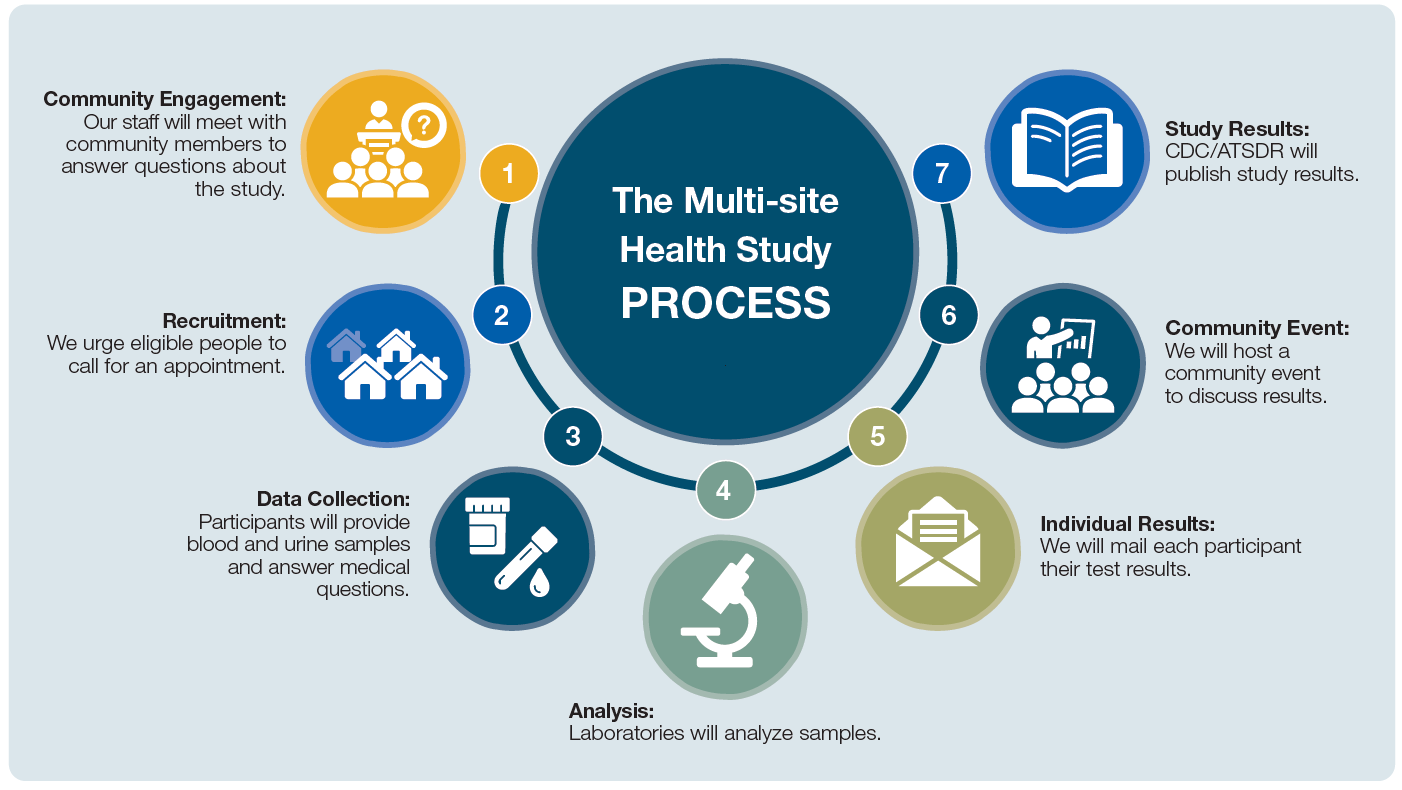FACTSHEET - PFAS Multi-site Study:
Community-Level Blood Test Results
based on the paper by Pavuk and others (2025)
https://papfas.rti.org/MSSCommunityPFASBloodLevelsFactSheet2025.pdf
Multi-Site Study of Communities with PFAS-Contaminated Drinking Water: Methods, Demographics, and PFAS Serum Concentrations
A nationwide cross-sectional study led by the Agency for Toxic Substances and Disease Registry in collaboration with research and community partners, was designed to investigate health outcomes linked to per- and polyfluoroalkyl substances (PFAS) exposure among residents of communities with contaminated drinking water. The objective was to describe the study design, methods, participant demographics, and PFAS serum concentrations. From 2019 to 2023, adult (18+) and child (ages 4–17) participants were recruited from communities with past or ongoing PFAS contamination of drinking water across eight sites in California, Colorado, Massachusetts, Michigan, New Hampshire, New York, New Jersey, and Pennsylvania. Data on demographics, lifestyle factors, and residential, occupational, and medical history were collected via questionnaires. Extensive clinical tests assessed cardiometabolic, liver, thyroid, kidney, glycemic, and immune parameters. Neurobehavioral tests were administered to children (ages 5–17). PFAS quantified in serum included MeFOSAA, PFHxS, PFOS, PFOA, PFNA, PFDA, and PFUnDA. Serum, whole blood, and urine samples were banked for future analyses. The study enrolled 5826 adults (geometric mean age: 53.6 years; 60.2 % female; 77.2 % non-Hispanic White) and 710 children (geometric mean age: 10.7 years; 48.5 % female; 69 % non-Hispanic White). Compared with NHANES data (2017–2020), adults showed elevated geometric mean concentrations of PFHxS and PFOA; only PFHxS was elevated in children. These serum concentrations reflect a wide range of PFAS exposures in communities affected by contamination from firefighting activities and industrial emissions, and other sources. This large study is a valuable resource for exploring associations between PFAS exposure and health effects in adults and children.
Citation:
Marian Pavuk, John L. Adgate, Scott M. Bartell, Erin Bell, Linda M. Brown, Robert J. Laumbach, Laurel A. Schaider, Thomas J. van t' Erve, Jordan M. Bailey, Julianne Cook Botelho, Antonia M. Calafat, Chris R. Cutler, Steven Forand, Judith M. Graber, Tamarra James-Todd, Zuha Jeddy, Kayoko Kato, Nayara Mowry, Anil S. Nair, Pamela Ohman-Strickland, Patrick Rago, Adam M. Schaefer, Anne P. Starling, Veronica M. Vieira, Meghan M. Weems, Kristine F. Wiant, Frank J. Bove,
Multi-site study of communities with PFAS-contaminated drinking water: Methods, demographics, and PFAS serum concentrations,
Environment International,
Volume 202,
2025,
109589,
ISSN 0160-4120,
https://doi.org/10.1016/j.envint.2025.109589.
https://doi.org/10.1016/j.envint.2025.109589
Enhanced spatial analysis assessing the association between PFAS-contaminated water and cancer incidence: rationale, study design, and methods
This protocol paper describes the Enhanced PFAS Spatial Analysis study rationale, study design, and methods that will be used by researchers to determine the association of PFAS-related exposures and cancer incidence using population-based incident cancer cases and cancer-free controls in a 12-county area of southeastern Pennsylvania.
Citation:
Jones RM, Kulick ER, Snead R, Wilson RT, Hughes J, Lillys T. Enhanced spatial analysis assessing the association between PFAS-contaminated water and cancer incidence: rationale, study design, and methods. BMC Cancer. 2025 Jan 17;25(1):101. doi: 10.1186/s12885-025-13508-2. PMID: 39833723; PMCID: PMC11744822.
https://bmccancer.biomedcentral.com/articles/10.1186/s12885-025-13508-2










